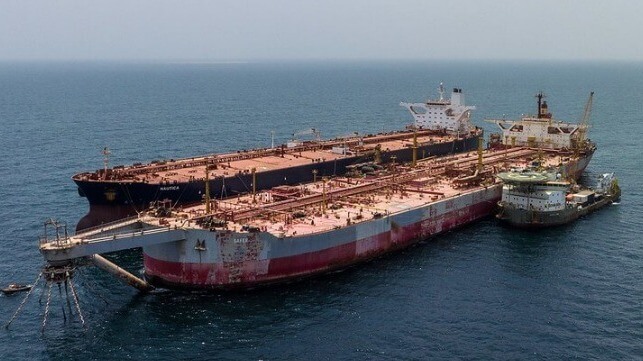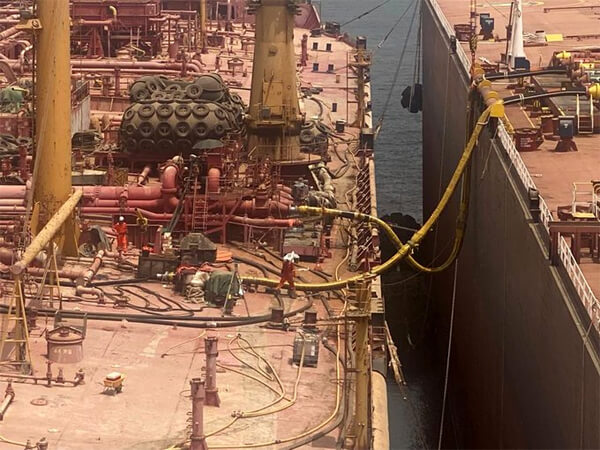Oil Transfer Begins from Derelict FSO Safer in UN-Led Effort off Yemen

After years of negotiations and planning, the United Nations with its contractor Boskalis’ SMIT Salvage announced that the oil transfer from the derelict FSO Safer off the coast of Yemen has begun. UN officials said the pipes have been laid and the precautions taken and as of this morning at 10:45 a.m. local time “the pumps are on.”
The former crude oil tanker Nautica, which the UN acquired from Euronav, was moved into position alongside the FSO Safer over the weekend with the assistance of two tugs from Smit Lamnaico. The tanker had arrived in Yemen over a week ago after having been waiting in the anchorage in Djibouti. The vessel was handed over on July 17 to Yemen’s oil company SEPOC in the presence of the country's Huthi authorities who control the area around Sanaa and where the Safer is anchored. They renamed the tanker Yemen.
After the tanker was put in place, SMIT reports that oil booms were installed on the bow and stern between the two vessels as a precaution during the ship-to-ship oil transfer. The technical team had previously surveyed the Safer reporting that it was stable enough to begin the transfer and prepared the equipment aboard for the process. The Safer has not been operating since 2015 and in recent years only had a skeleton staff attempting to maintain the ship.

David Gressly who is leading the effort for the UN Tweeted the photo to say the transfer was underway
“With every gallon of oil now being pumped off the Safer the threat of a potential spill that has loomed over the people of Yemen and indeed the countries and economies depending on the shared Red Sea ecosystem, recedes,” said UNDP Administrator Achim Steiner. “The challenges on this project have been huge, but the response by so many who have made this rescue operation possible has been equally huge.”
The UN highlights it steeped in to lead the project when no other organization was prepared to address the challenge. In addition to significant funding from many countries, the UN made an emergency loan from its funds so the project could proceed. They are still fundraising so that the UN’s loan can be repaid.
Estimates vary on how long this phase of the operation will last. SMIT is publicly saying two to three weeks for the pumping. UN officials have said it could last up to 19 days. At the end of today, they were planning to sound the tanks on the Safer to see how much oil they were able to transfer during the first day of the operation. Estimates are that there are 1.14 million barrels of crude oil stored on the Safer.

that matters most
Get the latest maritime news delivered to your inbox daily.
UN officials point out that this is just the next step in the long process with several key steps remaining. After the pumping is completed, SMIT with use equipment to clean the tanks aboard the Safer to remove as much residue oil. All the material will also be stored on the Yemen and then the Safer will be prepared to be towed away for recycling.
The plan calls for the Yemen to remain indefinitely in place of the Safer. Huthi officials claim ownership of the oil. The UN said that after the transfer, the project involves the installation of a CALM buoy which will be used to secure the Yemen.
